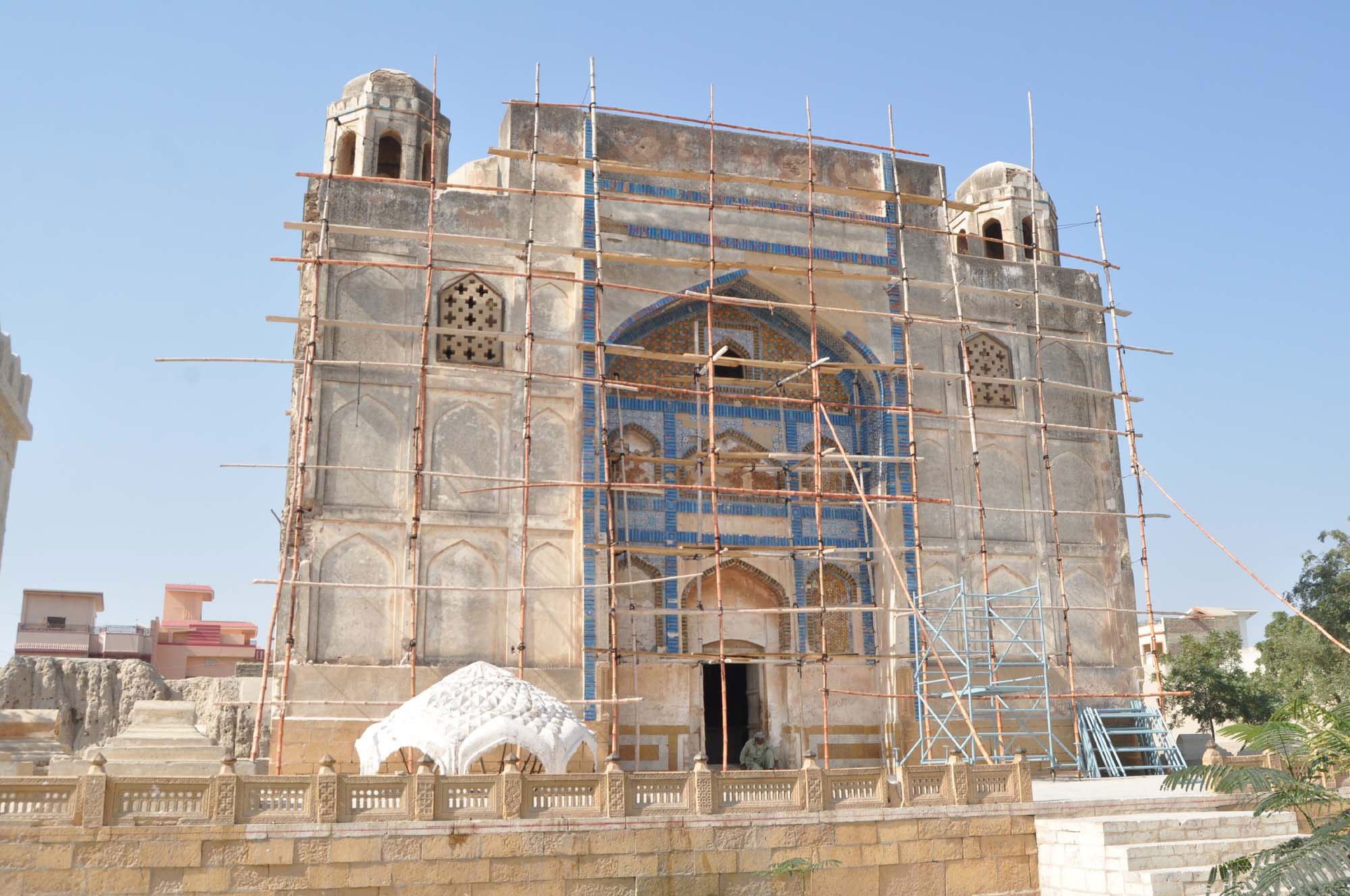
The tombs and mausoleums built by the rulers of the same era have remained forsaken and in ruins. The 19th century Victorian structures, built during the British reign, are also in shambles, barring a few.
Fading from memory: Kalhoro's tiled marvel beckons those who wish to renew its glory
The palatial mansions built in the late 19th and early 20th century in Hirabad – named the ‘town of diamonds’ for its wealthy residents – and other parts of the city are being demolished to build new structures.
The fate of old markets, such as Shahi Bazaar and Tower market, has been no different. The government's conservation efforts at some of these heritage sites have often done more harm than good.
Understanding this predicament, a non-profit Endowment Fund Trust (EFT) for Preservation of the Heritage of Sindh began restoration work at some archaeological sites a few years ago.
It completed a project at Talpur's Haveli in Latifabad and another one at the two-century-old mausoleum of Mir Karam Ali Talpur, which is a complex of tombs in Hirabad.
 The Rs29.8-million project, slated to complete by June 2017, aims to preserve the interior, exterior, platform, an adjacent vaulted tomb, main gate, fortified wall and landscaping of the open yard. PHOTO: Z ALI/EXPRESS
The Rs29.8-million project, slated to complete by June 2017, aims to preserve the interior, exterior, platform, an adjacent vaulted tomb, main gate, fortified wall and landscaping of the open yard. PHOTO: Z ALI/EXPRESSAround six months ago, EFT embarked upon a journey to restore an 18th century mausoleum of the Kalhoro dynasty's ruler Mian Ghulam Shah Kalhoro, the man who founded Hyderabad and ruled from 1757 to 1772. The Rs29.8-million project, slated to complete by June 2017, aims to preserve the interior, exterior, platform, an adjacent vaulted tomb, main gate, fortified wall and landscaping of the open yard.
According to the project director Mohan Lal, the EFT has so far completed over 20 per cent of the targeted work but mostly at the fortification wall. However, keeping the restored features indistinguishable with the original class of these structures seems to have eluded the conservationists in both the Talpur and Kalhoro tombs.
Culture and heritage: Rediscovering a conspicuously indistinct Hyderabad
In the on-going restoration work, the quality of the new Kashi Kari tiles made of traditional glazed mosaic hardly matches the original ones. The missing dome on top of Kalhoro’s tomb is also a bone of contention with those involved in EFT’s project arguing to build a new one but preservation experts insisting on preserving the structure as it is.
 The placement of iron bars directly into the outer walls of the Kalhoro tomb has ruined the original façade of the 18th century structure. PHOTO: Z ALI/EXPRESS
The placement of iron bars directly into the outer walls of the Kalhoro tomb has ruined the original façade of the 18th century structure. PHOTO: Z ALI/EXPRESSAt a training workshop held for artisans on Wednesday at the Kalhoro tomb, preservation experts from Karachi and Lahore shared their reservations. The scaffolding whose thick iron rods penetrated the heritage building's facade apparently left a stinging effect on the experts.
“You should take samples of the original material for research and lab tests so that you know what the original formulation was,” suggested Kamil Khan Mumtaz, a Lahore-based architect, educator, author and a member of the board of governors for Lok Virsa and Pakistan National Fund for Cultural Heritage.
“The samples of tiles, mortar and base should have been sent for a lab test to check the quality of the material and its composition,” said Khwaja Rizwan Qadeer, a graduate of the University of Houston involved in the construction of new structures with Mughal-era architecture in the Punjab.
Nabahat Lotia, an expert of ceramics from Indus Valley School, also felt that the quality of mortar was not good. “You need to [conduct] research on astar [mortar, which binds the tiles to the base].”
The experts also insisted on preserving what is left of the mausoleum instead of opting for reconstruction. “Modern technology allows us to create a much better structure but it won't be the same [18th century] tomb," said Mumtaz.
 The quality of the new Kashi Kari tiles made of traditional glazed mosaic hardly matches the original ones. PHOTO: Z ALI/EXPRESS
The quality of the new Kashi Kari tiles made of traditional glazed mosaic hardly matches the original ones. PHOTO: Z ALI/EXPRESSLime grouting vs new tiles
“We advised [the EFT] to do lime grouting instead of fixing new Kashi tiles in place of the lost ones," said architect Marvi Mazhar, who specialises in restoring historic buildings, told The Express Tribune while pointing to the sequence of arch shaped panels on the exterior. The tiles have fallen from most of the panels that decorate each of the four sides of the tomb walls left blackened by pollution, algae and fungus.
Qadeer explained that the new tiles lack glaze because the manufacturers are using ready-made glass powder instead of following the old method of preparing fine glass, breaking into small fragments before turning them into powder. He pointed out similar differences in the old and new processes of making bricks.
The manufacturers of Kashi tiles from Hala and Matiari also shared their lack of ability to produce the same 18th century tiles. “We don't have the same quality of sand, wood [for burning], colours and other material to produce such fine quality," admitted Manzoor Memon, whose manufacturing unit is competing for the contract that, according to an official, the EFT is likely to give at a rate of Rs400 per square-foot.
Memon and other makers of Kashi tiles, Khuda Dino Arbab, Jani Soomro and Abdul Hafeez Memon, said they use gas to heat the tiles while the ancient artisans burnt the acacia tree for this purpose.
The Kashi tiles are painted in blue. When the Kalhoro and Talpur rulers built the tombs, the artisans used pure cobalt, a chemical element, unlike their present day counterparts who mix 80 to 90 per cent clay. The reason, according to Arbab, is the high price of cobalt.
 The missing dome on top of Kalhoro’s tomb is also a bone of contention with those involved in EFT’s project arguing to build a new one but preservation experts insisting on preserving the structure as it is. PHOTO: Z ALI/EXPRESS
The missing dome on top of Kalhoro’s tomb is also a bone of contention with those involved in EFT’s project arguing to build a new one but preservation experts insisting on preserving the structure as it is. PHOTO: Z ALI/EXPRESSDo not disturb
The tomb's interior, exquisitely decorated with paintings, gilding, frescoes, Kashi tiles and arched windows filled with terracotta grilles of geometrical and arabesque patterns, has lost its lustre. Its central dome collapsed in the 1890s.
 Kalhoro tomb’s central dome collapsed in the 1890s. The British placed iron beams to hold the roof. PHOTO: Z ALI/EXPRESS
Kalhoro tomb’s central dome collapsed in the 1890s. The British placed iron beams to hold the roof. PHOTO: Z ALI/EXPRESSMumtaz, Qadeer and Mazhar opposed the EFT's plan to reconstruct the dome in whose place iron beams fixed during the British rule, hold the roof. “My advice is not to disturb the present form,” said Mumtaz. Qadeer suggested washing the tiles with water and hands even if it harms the skin. “You can't use cloth or detergent or any other chemical to remove dirt. If you do, they will spoil the colours.”
The experts believed that the structure, which has been weakened by moisture and fungus, is too weak to sustain the weight of the dome. "The [newly built] dome may fall," feared Qadeer.
 Endowment Fund Trust recently completed a restoration project at the two-century-old mausoleum of Mir Karam Ali Talpur, which is a complex of tombs in Hirabad. PHOTO: Z ALI/EXPRESS
Endowment Fund Trust recently completed a restoration project at the two-century-old mausoleum of Mir Karam Ali Talpur, which is a complex of tombs in Hirabad. PHOTO: Z ALI/EXPRESSLearning from experience
The views shared by the preservation experts convinced the EFT that the approach they used previously for the restoration of Talpur tombs was not the best. “We have learnt from that experiment,” said EFT trustee and secretary Abdul Hameed Akhund, as he spoke to The Express Tribune.
 The restoration work on the Talpur tombs has transported the historical structures into the present times instead of taking the visitors back to the 19th century. PHOTO: Z ALI/EXPRESS
The restoration work on the Talpur tombs has transported the historical structures into the present times instead of taking the visitors back to the 19th century. PHOTO: Z ALI/EXPRESSThe restoration work on the Talpur tombs has transported the historical structures into the present times instead of taking the visitors back to the 19th century. The specks and brushes of limestone dot the colourful tiles and panels on the restored exterior of the tomb. The interior was left in its original form.
 Specks and brushes of limestone dot the colourful tiles and panels on the restored exterior of the Talpur tombs. PHOTO: Z ALI/EXPRESS
Specks and brushes of limestone dot the colourful tiles and panels on the restored exterior of the Talpur tombs. PHOTO: Z ALI/EXPRESSNew wooden doors were also fixed in many of the gates at Talpur's mausoleum.
Akhund agreed with the experts’ suggestion about the preservation of exterior and interior walls of Kalhoro’s tomb but he still wants to go ahead with the construction of the dome. “I want to make the place look attractive, the way it was when constructed.”
He said that EFT will purchase sand from the mountainous regions in Dadu and Tharparkar and the acacia tree from forests in upper Sindh. The expensive chemicals copper and cobalt, both used to colour the tiles, will be imported from Europe, he added.
“Initially, we will buy limited supplies of these materials for testing," he shared. Materials such as river sand, hill sand, gypsum, semi-grounded gypsum, wet gypsum, unsalted gypsum, soapstone, soapstone powder, jaggery, fenugreek, jute fibre, tiles and bricks are being currently used for the conservation works, he explained. “The problem is not just with the materials but the artisans and labours of our times, who are far less skilled than their predecessors," he remarked.
 The restoration of old graves using white tiles steals away the history of the site which is still quite apparent in the older graves. PHOTO: Z ALI/EXPRESS
The restoration of old graves using white tiles steals away the history of the site which is still quite apparent in the older graves. PHOTO: Z ALI/EXPRESSFrom Nerunkot to Hyderabad
Mian Ghulam Shah Kalhoro, whose reign lasted from 1757 to 1772, founded Hyderabad in 1768 and named it Nerunkot, which he declared to be the capital of the Kalhoro dynasty after shifting it from Khudabad, south of present-day Dadu. Kalhoro was the one to build the famous Pakka Qila and Katcha Qila forts as well as the shrine of Shah Abdul Latif Bhitai.
Celebrating the rich intellectual heritage of Sindh
Before his death in 1772, he set the foundations of his mausoleum, built inside a rectangular-shaped fort, which also served as the second line of defense on a northern hillock of Pakka Qila.
His 15-year rule saw Sindh's reunification in its present shape and expansion beyond Multan to Dera Ghazi Khan. He is credited for leading successful campaigns against the Maratha's Rao of Kutch. War, religion, architecture, agriculture and a peaceful reign, remain salient features of his era.












1732012115-0/Untitled-design-(14)1732012115-0-270x192.webp)


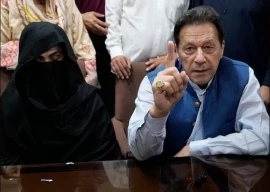

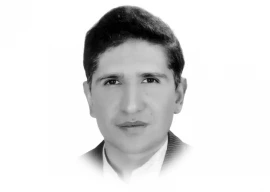


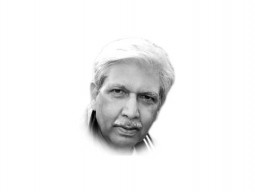

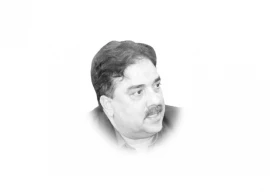
COMMENTS (5)
Comments are moderated and generally will be posted if they are on-topic and not abusive.
For more information, please see our Comments FAQ